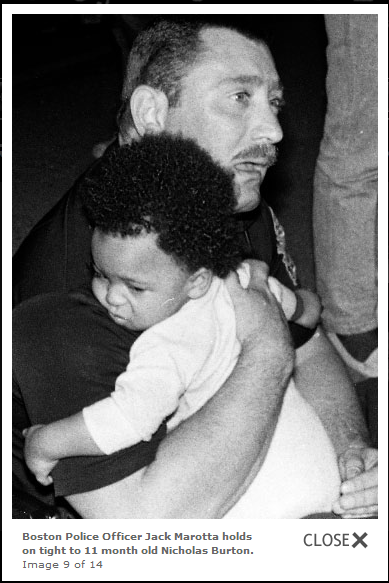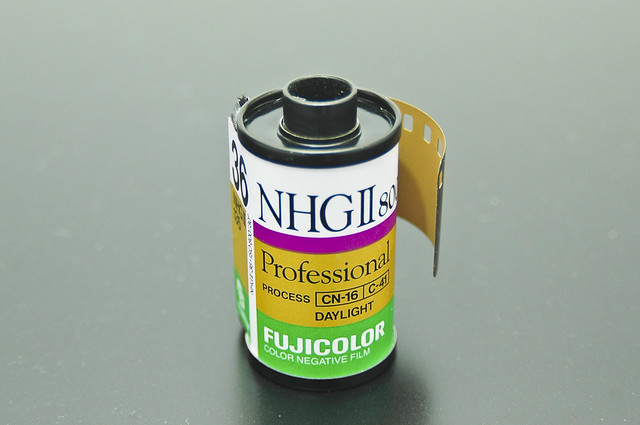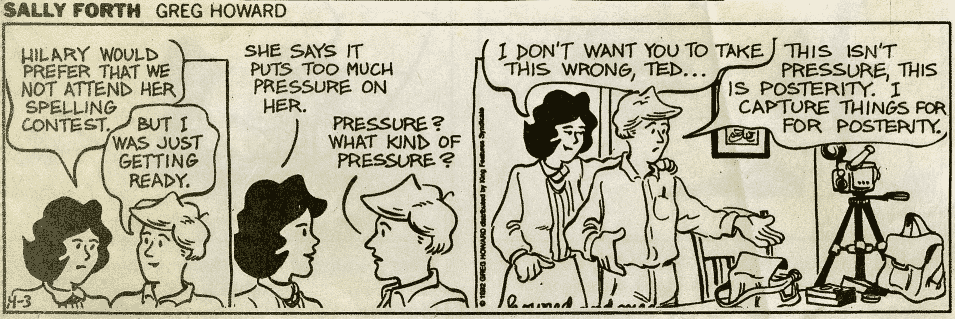To a streetshooter, letting a private moment pass can be painful—even unconscionable. But it's a lesson that must be learned.
“DA. DA.” My Russian mother-in-law is critiquing my latest photos. This one shows her good side; keep. That one makes our lawn look greener than the neighbor’s; keep.
She reaches Frame Six: 12-year-old Victoria nodding off while reading on the couch. An unposed slice of life, a Kodak moment.
“Nyet; Etto plokhaya primeta photographirovat kovota kogda ahni spyat.”
Nyet? I glance at Alexa, age nine. “What did she say?”
“Babushka says it’s bad luck for someone to be photographed while they’re asleep,” she explains. “Throw it out.”
Bad luck? Of all the cockamamy—“No way,” I fume. “This shot is priceless; Vicki’s kids will treasure it.” My entreaty falls on deaf ears. My mother-in-law and I are playing out a struggle as old as cave art. These days, it’s photographer versus subject. Each claims the moral high ground.
I have long stood defiantly on the side of the photographer. In 1986, photojournalist Stanley Forman had captured the drama of a black infant being dropped from a burning tenement into the arms of a white policeman. I discovered his photo essay in American Photographer. Forman observed, “The cop held the baby so tight, it looked like his.”
Used by permission; story at http://stanleyformanphotos.com/gallerycolumbia.html. See also www.stanleyformanphotos.com and www.beforeyellowtape.com,
The image of the burly white cop gripping a black child filled me with wonder. A decade later, a similar shot—a black fireman running while giving mouth-to-mouth to a white infant—would win a Pulitzer. What if I could freeze such a moment for the ages? That night, I ordered a Minox 35ML, a cigarette-packsize German instrument. With theMinox, I’d be able to capture action in dim light, unseen and unheard, if I used high-speed film.
Not your drugstore Disneycolor film, thank you. To record the unvarnished truth, I would need the subdued hues of professional film. (film canister photo by dropletcafe)
For years, my Minox accompanied me everywhere. It chronicled my routines, rituals, and rites of passage. Do you have a photo of yourself swearing in at jury duty (photo, below)? Discovering your first grey hair? Informing your therapist you’re healed? Signing your divorce papers? I do. For the grandchildren.
the author affirming his oath for jury duty in 1991
Above all, the quiet Minox let me furtively capture a disquieting side of life—the side seldom recorded. In my albums, you won’t find loved ones grinning “Cheese.” You will find the darker emotional gamut—melancholy, anger, pain. In one series, my young son had tumbled down a flight of stairs and was being comforted by my ex-wife (photo, below). On seeing the Madonna-and-son prints, my ex ordered enlargements.
my crying son being comforted by his mother after tumbling down a flight of stairs at his home (1989)
Suppose I had first asked, “Pardon me, Ex-Wife, will you hold that pose?” A streetshooter learns: ’Tis easier to get forgiveness than permission.
Nonphotographers look askance at my stealth shots. In their eyes, I’m no higher a life form than the paparazzi who dogged Diana. There are limits, they chide. .Trespass is trespass. Sometimes, the best photo is no photo.
Years ago, I dimly understood this. One morning in 1987, I was attending a shiva, a week-long period of mourning the deceased that is observed in Jewish homes. The three grown sons faced the wall as they recited the Kaddish, the ancient prayer for the dead. Draped in long white prayer shawls, they stood like human candles. “Photography,” wrote Susan Sontag in On Photography (1973), “is the inventory of mortality.” Before me was mortality in sharp focus. Click.
Instinctively, I unpocketed my Minox, discreetly focused, and took aim from my palm. But I could not bring myself to press the shutter. Eventually I’d have presented the photo to the sons.What if they felt violated? “Even when photographers are most concerned with mirroring reality,” noted Sontag, “they are still haunted by imperatives of taste and conscience.”
Later, I recounted the story to one of the sons. “That’s too bad,” he said. “My mom would have cherished that picture.”
“Stealing” an image is by no means the only way for a documentarian to invade a private moment. Recently, a young friend from work popped the question to his college sweetheart. “Early in our relationship,” Nathan recalled, “Meredith had let it slip that she’d like to be proposed to in an apple orchard.” So he arranged a gathering at a relative’s farm. Picnic basket in hand, the pair strolled to an apple orchard. Just before dessert, Nathan reached into the basket, slipped out the ring— and pushed a button on a hidden tape recorder.
I confess: The recorder was my idea. But Nathan, an electrical engineer, was sparked by its promise like Edison by the light bulb. Unfortunately, he was so nervous, he pushed Pause. “It’s a good thing,” Meredith said later.
Is it? I would give up a year of movies to hear—or see—my father proposing to my mother. Wouldn’t you?
Seldom has the truth-versus-privacy conflict been as engagingly told as in the 1953 film Roman Holiday. A journalist and a photographer furtively record a romp on the town with a runaway princess. In the end, the men forgo their exposé. But they present their photos to the princess so she'll never forget their adventure.
For me, learning when not to shoot has been an important lesson in photo etiquette. A second lesson—how to shoot—was grasped while setting up to photograph a former girlfriend’s wedding. Judith was 45 and starting to show her age. “During the ceremony,” she instructed, “use a softening filter. It’ll hide my wrinkles.”
“Judith,” I implored, “soften the prints, if you must. But not the negatives; you’ll never have the truth.”
“I don’t want the truth,” she explained. Like most brides, Judith regarded her wedding album as an idealized vanity; I, as an unblinking archive. Beauty versus Truth.
The book, the shiva, the movie, and the wedding revisit me as I ponder the fate of my bad-luck photo. “Today,” wrote Sontag during the heyday of 35-millimeter photography, “everything exists to end in a photograph.” So I’ve believed. But informed by these memories, I’m starting to see the bigger picture. Not every photo must end up in an album. Or on a hard drive.
Grabbing a pair of scissors, I bisect the offending photo. I slice it. I dice it. Then I walk to my mother-in-law and sprinkle the remains into her hand. “For you,” I say.
She smiles and nods. “Thank you very much.”
One small step for glasnost, one giant leap for a streetshooter.
© 2000 Paul Franklin Stregevsky








